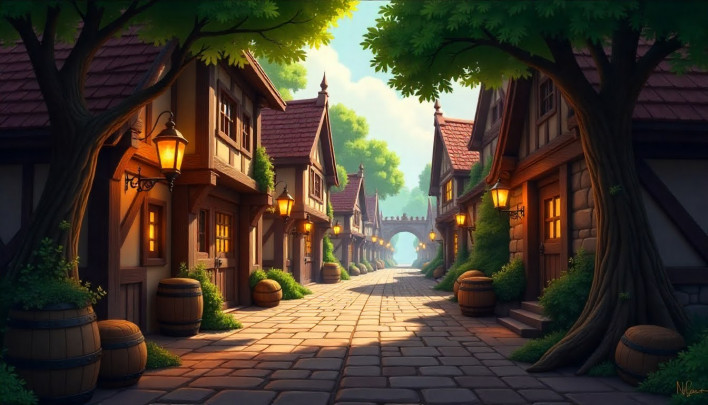
There are over a hundred zones in World of Warcraft — lush jungles, barren wastelands, glittering cities, desolate ruins—but for each player, a handful will always stand out. Not just because of the quests we did or the levels we gained there, but because these zones meant something. They imprinted themselves in our memory through their atmosphere, their stories, or the timing of our journey. Some zones come and go, forgotten except in dungeon queues or when chasing old achievements—but others stick with us forever. The question is: why?
WoW has so many iconic locations that it's hard to even count them. If you wish to get the best out of each of these regions, you will need plenty of resources to travel, fight and trade! Pandaria is one of the game's most beloved locations because of this, and in here you can get plenty of pandarian loot like gear and even Pandaria gold! Let's talk about what makes these locations so special.
The Power of Firsts
For many players, their first real exposure to World of Warcraft begins not with the game's plot, but with the zone they’re born into. Northshire Abbey, Valley of Trials, Shadowglen, Deathknell — these aren’t just starting zones. They’re the birthplace of identity.
The first wolves you slay, the first named quest mob you track down, the first mailbox you open, or the first time you leave your little pocket of safety and realize the world is huge — those memories are powerful. And because of that, even the most basic, mechanically outdated zones still resonate with emotional weight. The harsh red sands of Durotar, the towering trees of Teldrassil, or the haunted graveyards of Tirisfal Glades have nostalgia embedded in their textures. They're remembered not because they were technically amazing, but because they were ours.
Aesthetic Atmosphere That Transcends Time
There’s a reason people still talk about Grizzly Hills. On paper, it’s not mechanically unique. The quests aren’t revolutionary, and the rewards are dated. But the ambiance — those gentle pine-covered hills, the muted snow drifts, the logs over the rivers, and of course, that unforgettable music — create a place you want to be in, not just play through.
A zone with strong visual identity, coherent color palettes, and a distinctive soundtrack can do more for emotional memory than 100 kill quests. Think of zones like Zangarmarsh, with its glowing mushrooms and eerie blue fog, or Storm Peaks, where the sky seems too close and the cold feels real. These places evoke feelings. The zone becomes more than terrain — it becomes a mood.
WoW is, above all else, a game of immersion. You lose yourself in the world. And some zones are simply better at pulling you in than others.
The Role of Story and Stakes
Some zones become unforgettable because of the events that unfold within them. The Plaguelands aren’t pretty, but players remember them because of the sheer narrative gravity tied to them. This is where we watched the Scourge rise. This is where we fought alongside Tirion. This is where a shattered world was desperately trying to heal.
Similarly, zones like Icecrown, Suramar, or Revendreth anchor entire expansion narratives. When a zone isn’t just a place to level — but a place where the main plot hits hard — it cements itself in memory. Suramar, for example, had one of the most in-depth questlines ever introduced in the game, where the story unfolded slowly and intimately across dozens of hours. It felt like you were part of a rebellion — not just a hired sword.
On the other hand, take zones like Spires of Arak or Maldraxxus. Both had solid art and design, but their stories felt disconnected or uneven to some. It’s not just aesthetics or quest mechanics — it’s whether players felt like what they were doing mattered. Zones that deliver on narrative consequence and character depth tend to have more staying power.

Player Agency and Zone Interactivity
One underrated factor is how much control or change players can exert over a zone. Remember the Firelands dailies in Mount Hyjal during Cataclysm? As players completed dailies, the zone changed. New areas unlocked. The landscape transformed. Even if the content was repetitive, the feeling of influence made the zone memorable.
Or consider the Isle of Thunder. Unlocking gates and progressing the story together with your server felt significant. Even older zones, like Silithus during the Ahn’Qiraj war effort, had this shared sense of progress. Zones that responded to player actions created a deeper sense of investment.
When zones remain static — no matter how beautiful — they’re easier to forget. But when you feel like your presence changed something, that experience becomes yours.
When Real Life Intertwines
Sometimes, a zone sticks not because of the zone itself, but because of when you were there in your own life. Maybe you were leveling in Howling Fjord while listening to your favorite album on repeat during a rough time. Maybe you and your best friend duo-leveled through Stonetalon Mountains during the pandemic. Maybe your first raid was in Ulduar, and the surrounding Storm Peaks hold those memories close.
WoW is a social game, and zones are backdrops to real-world moments. Whether it’s the awkward silence in Vashj’ir because everyone hated underwater combat, or the joy of seeing Nagrand’s sweeping vistas for the first time with a group of friends — it’s the context that sometimes makes a zone unforgettable.
Legacy and Time Capsules
With the game’s long history, some zones gain legendary status because they represent something that no longer exists. Old Thousand Needles, before it flooded. The original Barrens, with its endless chat memes. Teldrassil, which is now just ashes.
These zones are no longer just spaces — they’re ghosts. Players who experienced them before they changed carry them like scars and stories. And because they can’t go back (outside of Chromie Time or Classic servers), they become sacred.
Even zones that didn’t seem amazing at the time — like Desolace or Dustwallow Marsh — gain retrospective charm simply because they belong to an earlier version of the world. They serve as time capsules, not just for WoW’s evolution, but for the players’ journeys within it.
Social Hubs and Player Density
Lastly, some zones become iconic purely because of how often players return. Think about Goldshire — not because it's well-designed, but because it’s infamous. Or Dalaran, which felt like a capital for the whole playerbase during Wrath and Legion. Stormwind, Orgrimmar, Shattrath, Valdrakken — zones where players congregate become part of our daily gameplay.
These zones stick not because they are emotionally resonant, but because they are always there. The auction house steps, the roleplay corners, the portals you rush through during raids. Over time, familiarity breeds attachment. Not always the deep, nostalgic kind — but an enduring recognition that still matters.

In Conclusion
There are many reasons why these zones stick with us for so long, and it's not only because they're masterfully designed and made. Not just because of the incredible and distinct audio and visual design that differentiates each zone — It's way more than that! What makes these zones stick to us is that we make history in them — our history. Where did you get your first mount? Where did you gain that level you grinded so hard for, and where did you have that epic battle that you still remember to this day? You weren’t just playing a game. You were there, in Azeroth.
And that's the magic of World of Warcraft. Not just that it gives us a world — but that some parts of that world become unforgettable.
-
 Guest Reporter
Guest Reporter
Sort by:
Comments :0





